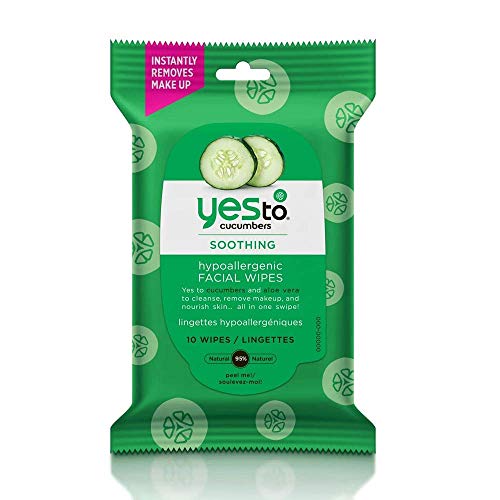
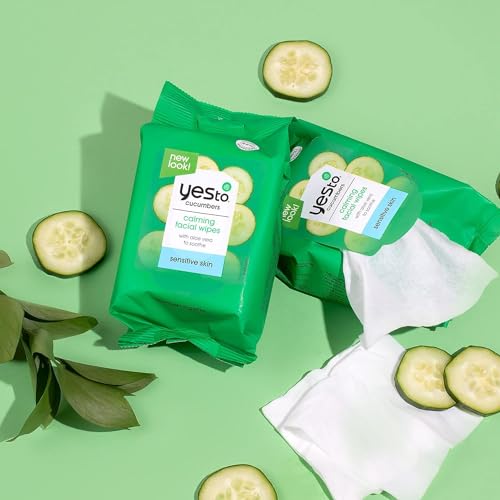
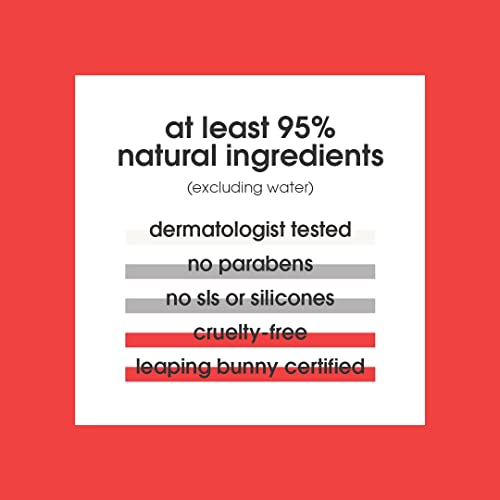
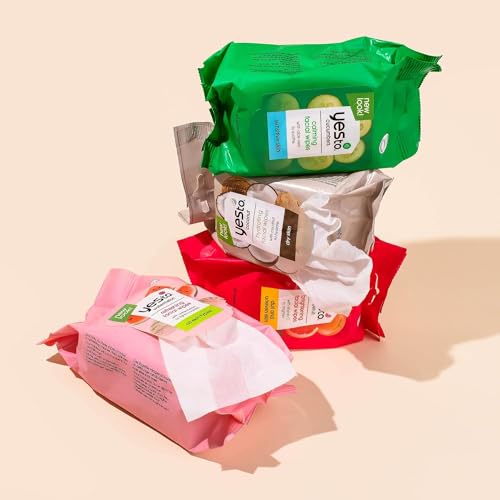
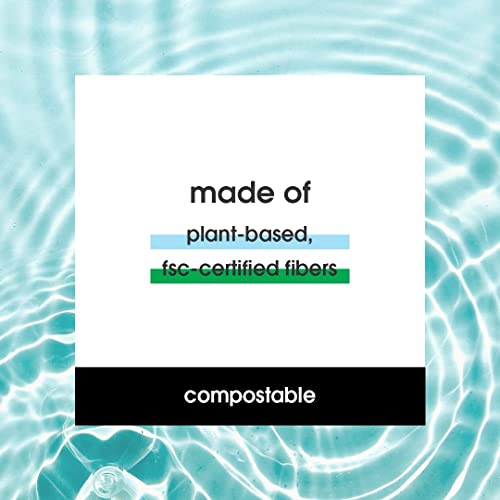
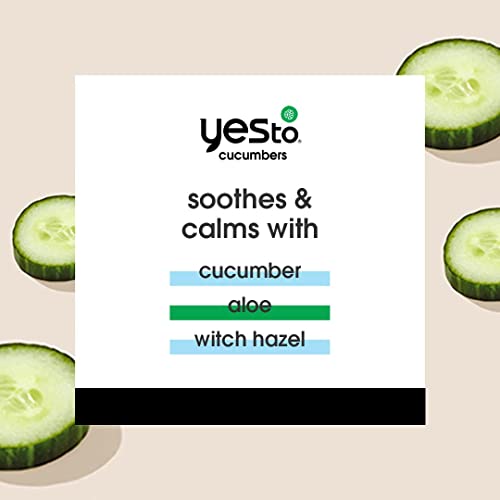
Yes To Cucumbers Face Wipes - Soothing & Moisturizing with Organic Ingredients - 10 Count


Fragrance
High RiskFragrance refers to a mixture of aromatic compounds used in products to provide scent. It is commonly listed as 'fragrance' or 'parfum' on product labels and can serve various functions, including enhancing user experience and masking undesirable odors.
Sustai Insights
Fragrance offers functional benefits by improving product appeal; however, it poses significant health risks, notably a high likelihood of causing allergies and allergic contact dermatitis. Environmental risks include potential pollution and endocrine disruption, though its overall carcinogenicity is low. Regulatory bodies have noted concerns regarding its use, leading to a high-risk classification. Safe usage practices should be observed, and alternatives such as natural essential oils are recommended for those sensitive to synthetic fragrances.
Benzoic Acid
Medium RiskBenzoic acid is a naturally occurring and synthetically produced compound commonly used as a preservative in food and cosmetic products. It helps inhibit the growth of mold, yeast, and some bacteria, thus extending shelf life and maintaining product quality.
Sustai Insights
Benzoic acid is effective as a preservative, ensuring product stability and safety. It is generally considered to have low health risks, with minimal concerns regarding carcinogenicity, allergies, or reproductive toxicity. Environmental risks are moderate, as it is not bioaccumulative but can be a pollutant. Regulatory bodies do impose certain restrictions on its use in various products. Safe usage practices should be followed to mitigate any potential risks. Available alternatives include sorbic acid and other natural preservatives, which may offer similar benefits with potentially lower environmental impact. The overall risk level is assessed as medium.
Sodium Benzoate
Medium RiskSodium benzoate is a preservative commonly used in food and cosmetic products to prevent microbial growth and extend shelf life. It is derived from benzoic acid and is effective at low concentrations, often used in acidic environments like beverages and condiments.
Sustai Insights
Sodium benzoate serves effectively as a preservative, contributing to product stability and safety. It is generally recognized as safe with low concerns for carcinogenicity, allergies, and reproductive toxicity, though it faces moderate use restrictions in some regions. Environmental risks include its potential as a pollutant, but it does not bioaccumulate significantly. Regulatory bodies have issued advisories regarding its concentration in products. Overall, the risk level is assessed as medium, with safe usage practices recommended. Alternatives such as potassium sorbate may provide similar benefits with potentially lower restrictions.
Citric Acid
Medium RiskCitric acid is an alpha hydroxy acid used in personal care products primarily for its role as a pH adjuster and natural preservative. It occurs naturally in citrus fruits and is commonly utilized in various formulations for its chelating properties and mild exfoliation benefits.
Sustai Insights
Citric acid offers functional benefits as an effective preservative and pH stabilizer, contributing to product longevity and stability. It is biodegradable and derived from renewable sources. Health risks are low, with minimal concerns regarding carcinogenicity, allergies, and reproductive toxicity. However, moderate use restrictions exist due to potential irritation at high concentrations. Environmental risks are limited, as citric acid is not known to accumulate in ecosystems. Regulatory agencies have no significant advisories against its use. Overall, it is assessed as a medium-risk ingredient, with safe usage practices recommended and alternatives available.
Phenoxyethanol
Medium RiskPhenoxyethanol is a preservative used in cosmetics and personal care products to prevent microbial growth and extend shelf life. It is commonly found in formulations such as lotions, creams, and serums.
Sustai Insights
Phenoxyethanol serves effectively as a preservative, ensuring product stability and safety by inhibiting microbial growth. It is considered to have low health risks regarding carcinogenicity, allergies, and reproductive toxicity. However, moderate use restrictions exist, and regulatory bodies have advised caution in specific applications. Environmental concerns include its potential as a pollutant, although it is not highly bioaccumulative. Overall, the ingredient presents a medium risk level, with safe usage practices recommended and alternative preservatives available for those seeking greener options.
Dicapryl Carbonate
Low RiskDicapryl carbonate is an ester derived from caprylic acid and carbonic acid. It is used primarily as an emollient and skin conditioning agent in cosmetic formulations, providing a smooth and soft feel to the skin.
Sustai Insights
Dicapryl carbonate serves as an effective emollient, enhancing the texture of skincare products. It is biodegradable and sustainably sourced, contributing positively to environmental sustainability. Health risks are minimal, with low concerns for cancer, allergies, or reproductive toxicity. There are no significant environmental hazards associated with its use, and it is not subject to regulatory restrictions. Overall, the ingredient presents a low risk profile, making it a favorable choice in cosmetic applications.
Dehydroacetic Acid
Low RiskDehydroacetic acid is a synthetic preservative commonly used in cosmetic and personal care products to inhibit microbial growth and extend shelf life.
Sustai Insights
Dehydroacetic acid offers effective preservation, enhancing product stability. It is considered low risk for carcinogenicity, allergies, and reproductive toxicity, with minimal environmental impact. Regulatory bodies report no significant hazards, and its use is generally accepted. However, precautions should be taken to avoid occupational exposure. Alternatives include natural preservatives like tocopherol. Overall, the assessment indicates a low-risk profile.
Aloe Barbadensis (Aloe Vera)
Low RiskAloe barbadensis, commonly known as aloe vera, is derived from the succulent leaves of the aloe plant. It is widely used in cosmetic products for its soothing and moisturizing properties, often included for its potential skin benefits.
Sustai Insights
Aloe vera provides effective moisturizing and soothing benefits for the skin, supporting its use in various cosmetic formulations. It is generally considered safe, with low concerns for carcinogenicity, allergies, and reproductive toxicity. Regulatory bodies impose minimal restrictions, underlining its low-risk profile. While environmental impacts are minimal, its sustainability credentials depend on sourcing practices. Safe usage includes topical application, with no significant adverse effects reported. Alternatives exist, such as plant-based gels, but aloe vera remains a favored choice due to its low-risk assessment.
Vegetarian Glycerin
Low RiskVegetarian glycerin, also known as glycerol, is a colorless, odorless, and viscous liquid derived from plant sources. It is primarily used as a humectant, solvent, and emollient in various personal care products, helping to retain moisture and improve texture.
Sustai Insights
Vegetarian glycerin offers functional benefits as an effective humectant, promoting hydration and skin smoothness. It is biodegradable and typically sustainably sourced. Health risks associated with glycerin are low, with no significant concerns for carcinogenicity, allergens, or reproductive toxicity. Environmental risks are minimal, and it is not subject to major regulatory warnings. Overall, the risk level for this ingredient is low, making it a safe choice in formulations. Safe usage practices include ensuring proper concentrations in products, and alternatives such as propylene glycol exist but may have differing properties.
Sea Salt
Low RiskSea salt is a mixture of inorganic salts derived primarily from the evaporation of seawater. It consists mainly of sodium chloride, with minor amounts of other minerals. Sea salt is commonly used as a seasoning and preservative in food products and may also have applications in cosmetics and personal care items.
Sustai Insights
Sea salt serves as an effective flavor enhancer and preservative, contributing to the taste and shelf-life of food products. It is generally considered safe with low risk for health concerns such as cancer, allergies, and reproductive toxicity. Environmental impact is minimal, as it does not contribute significantly to pollution or bioaccumulation. Regulatory bodies, including the FDA, currently do not impose restrictions on its use. Overall, the risk level associated with sea salt is low, making it a widely accepted ingredient with no significant adverse effects reported.
Camellia Oleifera (Tea Oil Camellia) Seed Extract
Low RiskCamellia oleifera (tea oil camellia) seed extract is derived from the seeds of the Camellia oleifera plant. It is primarily used in cosmetic formulations for its potential moisturizing and skin-conditioning properties, contributing to the overall texture and feel of the product.
Sustai Insights
This ingredient provides functional benefits as a skin moisturizer and conditioner, often sourced sustainably. Health risks are minimal, with low concerns regarding carcinogenicity, allergies, and reproductive toxicity. Environmental risks are also low, with no significant pollutant or bioaccumulation potential identified. Regulatory assessments indicate no active restrictions. Overall, the risk level for this ingredient is considered low. Safe usage practices include ensuring appropriate formulation concentrations, and alternatives may include other plant-derived extracts with similar benefits.
Water
Low RiskWater is a clear, colorless liquid essential for various biological processes. It serves as a solvent in formulations, facilitating the dissolution of other ingredients and enhancing product texture and application. Additionally, water plays a crucial role in hydration and is a key component in many cosmetic and personal care products.
Sustai Insights
Water is an effective solvent and hydrator, contributing to the texture and efficacy of formulations. It is biodegradable and generally regarded as safe, with low concerns regarding carcinogenicity, allergies, and reproductive toxicity. However, excessive water usage can lead to environmental concerns, particularly regarding resource depletion. Regulatory bodies do not impose restrictions on water use in cosmetics. Overall, the risks associated with water are low, making it a safe and essential ingredient.
Cucumis Sativus (Cucumber) Fruit Extract
Low RiskCucumis sativus (cucumber) fruit extract is derived from the fruit of the cucumber plant. It is commonly used in cosmetic formulations for its hydrating and soothing properties, often included in products aimed at providing moisture and calming effects to the skin.
Sustai Insights
Cucumis sativus fruit extract offers functional benefits such as hydration and soothing effects on the skin, contributing to the overall efficacy of cosmetic products. It is regarded as low risk with minimal health concerns, including low potential for carcinogenicity, irritation, or allergies. Environmental risks are also low, with no significant pollutant or bioaccumulation concerns. Regulatory bodies do not impose restrictions on its use, supporting its safety in cosmetics. Safe usage practices include ensuring proper formulation concentrations. Overall, this ingredient presents a low risk profile, making it a suitable choice for various cosmetic applications.
Xanthan Gum
Low RiskXanthan gum is a polysaccharide, a sugar-based compound produced by the fermentation of glucose or sucrose. It is commonly used as a thickening agent and stabilizer in various food and cosmetic products due to its ability to improve texture and prevent ingredient separation.
Sustai Insights
Xanthan gum serves effectively as a thickener and stabilizer, enhancing product texture and consistency. It is biodegradable and typically derived from renewable sources, supporting sustainability efforts. Health risks are minimal, with low concerns regarding carcinogenicity, allergies, and reproductive toxicity. Environmental impact is similarly low, posing no significant hazards. Regulatory agencies, including the FDA, regard it as safe for use, with no significant restrictions. Overall, xanthan gum is assessed as low risk, making it a suitable ingredient in formulations.
Polyglyceryl 4 Caprate
Low RiskPolyglyceryl-4 caprate is an ester derived from capric acid and polyglycerin-4, commonly used in cosmetic formulations as an emulsifier and skin conditioning agent. It helps to blend oil and water-based ingredients, enhancing product stability and texture.
Sustai Insights
Polyglyceryl-4 caprate serves effectively as an emulsifier, promoting product stability and enhancing skin feel. It is derived from renewable sources and is biodegradable, contributing to sustainability. Health risks are minimal, with low concerns regarding carcinogenicity, allergies, and irritation. Environmental impact is also low, with no significant pollutant concerns. Regulatory reviews indicate no restrictions, supporting its safety profile. Overall, the ingredient presents a low risk, making it a suitable choice in cosmetic formulations.
Caprylyl/ Capryl Glucoside
Low RiskCaprylyl/capryl glucoside is an alkyl glucoside derived from natural sources, commonly used as a surfactant and emulsifier in personal care products. It aids in the cleansing and foaming properties of formulations, enhancing the overall texture and performance without harsh effects.
Sustai Insights
Caprylyl/capryl glucoside serves effectively as a mild surfactant, providing gentle cleansing and emulsification. It is biodegradable and derived from renewable sources, contributing to its sustainability profile. However, it may cause mild skin irritation in sensitive individuals, and while its allergenic potential is low to moderate, caution is advised. Regulatory status indicates no significant restrictions, and overall risk assessment suggests a low risk for health and environmental impacts, making it a favorable option in formulations.
Dicapryl Carbonate
Low RiskDicapryl carbonate is an ester derived from caprylic acid and carbonic acid. It is used primarily as an emollient and skin conditioning agent in cosmetic formulations, providing a smooth and soft feel to the skin.
Sustai Insights
Dicapryl carbonate serves as an effective emollient, enhancing the texture of skincare products. It is biodegradable and sustainably sourced, contributing positively to environmental sustainability. Health risks are minimal, with low concerns for cancer, allergies, or reproductive toxicity. There are no significant environmental hazards associated with its use, and it is not subject to regulatory restrictions. Overall, the ingredient presents a low risk profile, making it a favorable choice in cosmetic applications.
Dehydroacetic Acid
Low RiskDehydroacetic acid is a synthetic preservative commonly used in cosmetic and personal care products to inhibit microbial growth and extend shelf life.
Sustai Insights
Dehydroacetic acid offers effective preservation, enhancing product stability. It is considered low risk for carcinogenicity, allergies, and reproductive toxicity, with minimal environmental impact. Regulatory bodies report no significant hazards, and its use is generally accepted. However, precautions should be taken to avoid occupational exposure. Alternatives include natural preservatives like tocopherol. Overall, the assessment indicates a low-risk profile.
Aloe Barbadensis (Aloe Vera)
Low RiskAloe barbadensis, commonly known as aloe vera, is derived from the succulent leaves of the aloe plant. It is widely used in cosmetic products for its soothing and moisturizing properties, often included for its potential skin benefits.
Sustai Insights
Aloe vera provides effective moisturizing and soothing benefits for the skin, supporting its use in various cosmetic formulations. It is generally considered safe, with low concerns for carcinogenicity, allergies, and reproductive toxicity. Regulatory bodies impose minimal restrictions, underlining its low-risk profile. While environmental impacts are minimal, its sustainability credentials depend on sourcing practices. Safe usage includes topical application, with no significant adverse effects reported. Alternatives exist, such as plant-based gels, but aloe vera remains a favored choice due to its low-risk assessment.
Vegetarian Glycerin
Low RiskVegetarian glycerin, also known as glycerol, is a colorless, odorless, and viscous liquid derived from plant sources. It is primarily used as a humectant, solvent, and emollient in various personal care products, helping to retain moisture and improve texture.
Sustai Insights
Vegetarian glycerin offers functional benefits as an effective humectant, promoting hydration and skin smoothness. It is biodegradable and typically sustainably sourced. Health risks associated with glycerin are low, with no significant concerns for carcinogenicity, allergens, or reproductive toxicity. Environmental risks are minimal, and it is not subject to major regulatory warnings. Overall, the risk level for this ingredient is low, making it a safe choice in formulations. Safe usage practices include ensuring proper concentrations in products, and alternatives such as propylene glycol exist but may have differing properties.
Benzoic Acid
Medium RiskBenzoic acid is a naturally occurring and synthetically produced compound commonly used as a preservative in food and cosmetic products. It helps inhibit the growth of mold, yeast, and some bacteria, thus extending shelf life and maintaining product quality.
Sustai Insights
Benzoic acid is effective as a preservative, ensuring product stability and safety. It is generally considered to have low health risks, with minimal concerns regarding carcinogenicity, allergies, or reproductive toxicity. Environmental risks are moderate, as it is not bioaccumulative but can be a pollutant. Regulatory bodies do impose certain restrictions on its use in various products. Safe usage practices should be followed to mitigate any potential risks. Available alternatives include sorbic acid and other natural preservatives, which may offer similar benefits with potentially lower environmental impact. The overall risk level is assessed as medium.
Sea Salt
Low RiskSea salt is a mixture of inorganic salts derived primarily from the evaporation of seawater. It consists mainly of sodium chloride, with minor amounts of other minerals. Sea salt is commonly used as a seasoning and preservative in food products and may also have applications in cosmetics and personal care items.
Sustai Insights
Sea salt serves as an effective flavor enhancer and preservative, contributing to the taste and shelf-life of food products. It is generally considered safe with low risk for health concerns such as cancer, allergies, and reproductive toxicity. Environmental impact is minimal, as it does not contribute significantly to pollution or bioaccumulation. Regulatory bodies, including the FDA, currently do not impose restrictions on its use. Overall, the risk level associated with sea salt is low, making it a widely accepted ingredient with no significant adverse effects reported.
Camellia Oleifera (Tea Oil Camellia) Seed Extract
Low RiskCamellia oleifera (tea oil camellia) seed extract is derived from the seeds of the Camellia oleifera plant. It is primarily used in cosmetic formulations for its potential moisturizing and skin-conditioning properties, contributing to the overall texture and feel of the product.
Sustai Insights
This ingredient provides functional benefits as a skin moisturizer and conditioner, often sourced sustainably. Health risks are minimal, with low concerns regarding carcinogenicity, allergies, and reproductive toxicity. Environmental risks are also low, with no significant pollutant or bioaccumulation potential identified. Regulatory assessments indicate no active restrictions. Overall, the risk level for this ingredient is considered low. Safe usage practices include ensuring appropriate formulation concentrations, and alternatives may include other plant-derived extracts with similar benefits.
Water
Low RiskWater is a clear, colorless liquid essential for various biological processes. It serves as a solvent in formulations, facilitating the dissolution of other ingredients and enhancing product texture and application. Additionally, water plays a crucial role in hydration and is a key component in many cosmetic and personal care products.
Sustai Insights
Water is an effective solvent and hydrator, contributing to the texture and efficacy of formulations. It is biodegradable and generally regarded as safe, with low concerns regarding carcinogenicity, allergies, and reproductive toxicity. However, excessive water usage can lead to environmental concerns, particularly regarding resource depletion. Regulatory bodies do not impose restrictions on water use in cosmetics. Overall, the risks associated with water are low, making it a safe and essential ingredient.
Fragrance
High RiskFragrance refers to a mixture of aromatic compounds used in products to provide scent. It is commonly listed as 'fragrance' or 'parfum' on product labels and can serve various functions, including enhancing user experience and masking undesirable odors.
Sustai Insights
Fragrance offers functional benefits by improving product appeal; however, it poses significant health risks, notably a high likelihood of causing allergies and allergic contact dermatitis. Environmental risks include potential pollution and endocrine disruption, though its overall carcinogenicity is low. Regulatory bodies have noted concerns regarding its use, leading to a high-risk classification. Safe usage practices should be observed, and alternatives such as natural essential oils are recommended for those sensitive to synthetic fragrances.
Sodium Benzoate
Medium RiskSodium benzoate is a preservative commonly used in food and cosmetic products to prevent microbial growth and extend shelf life. It is derived from benzoic acid and is effective at low concentrations, often used in acidic environments like beverages and condiments.
Sustai Insights
Sodium benzoate serves effectively as a preservative, contributing to product stability and safety. It is generally recognized as safe with low concerns for carcinogenicity, allergies, and reproductive toxicity, though it faces moderate use restrictions in some regions. Environmental risks include its potential as a pollutant, but it does not bioaccumulate significantly. Regulatory bodies have issued advisories regarding its concentration in products. Overall, the risk level is assessed as medium, with safe usage practices recommended. Alternatives such as potassium sorbate may provide similar benefits with potentially lower restrictions.
Cucumis Sativus (Cucumber) Fruit Extract
Low RiskCucumis sativus (cucumber) fruit extract is derived from the fruit of the cucumber plant. It is commonly used in cosmetic formulations for its hydrating and soothing properties, often included in products aimed at providing moisture and calming effects to the skin.
Sustai Insights
Cucumis sativus fruit extract offers functional benefits such as hydration and soothing effects on the skin, contributing to the overall efficacy of cosmetic products. It is regarded as low risk with minimal health concerns, including low potential for carcinogenicity, irritation, or allergies. Environmental risks are also low, with no significant pollutant or bioaccumulation concerns. Regulatory bodies do not impose restrictions on its use, supporting its safety in cosmetics. Safe usage practices include ensuring proper formulation concentrations. Overall, this ingredient presents a low risk profile, making it a suitable choice for various cosmetic applications.
Xanthan Gum
Low RiskXanthan gum is a polysaccharide, a sugar-based compound produced by the fermentation of glucose or sucrose. It is commonly used as a thickening agent and stabilizer in various food and cosmetic products due to its ability to improve texture and prevent ingredient separation.
Sustai Insights
Xanthan gum serves effectively as a thickener and stabilizer, enhancing product texture and consistency. It is biodegradable and typically derived from renewable sources, supporting sustainability efforts. Health risks are minimal, with low concerns regarding carcinogenicity, allergies, and reproductive toxicity. Environmental impact is similarly low, posing no significant hazards. Regulatory agencies, including the FDA, regard it as safe for use, with no significant restrictions. Overall, xanthan gum is assessed as low risk, making it a suitable ingredient in formulations.
Citric Acid
Medium RiskCitric acid is an alpha hydroxy acid used in personal care products primarily for its role as a pH adjuster and natural preservative. It occurs naturally in citrus fruits and is commonly utilized in various formulations for its chelating properties and mild exfoliation benefits.
Sustai Insights
Citric acid offers functional benefits as an effective preservative and pH stabilizer, contributing to product longevity and stability. It is biodegradable and derived from renewable sources. Health risks are low, with minimal concerns regarding carcinogenicity, allergies, and reproductive toxicity. However, moderate use restrictions exist due to potential irritation at high concentrations. Environmental risks are limited, as citric acid is not known to accumulate in ecosystems. Regulatory agencies have no significant advisories against its use. Overall, it is assessed as a medium-risk ingredient, with safe usage practices recommended and alternatives available.
Polyglyceryl 4 Caprate
Low RiskPolyglyceryl-4 caprate is an ester derived from capric acid and polyglycerin-4, commonly used in cosmetic formulations as an emulsifier and skin conditioning agent. It helps to blend oil and water-based ingredients, enhancing product stability and texture.
Sustai Insights
Polyglyceryl-4 caprate serves effectively as an emulsifier, promoting product stability and enhancing skin feel. It is derived from renewable sources and is biodegradable, contributing to sustainability. Health risks are minimal, with low concerns regarding carcinogenicity, allergies, and irritation. Environmental impact is also low, with no significant pollutant concerns. Regulatory reviews indicate no restrictions, supporting its safety profile. Overall, the ingredient presents a low risk, making it a suitable choice in cosmetic formulations.
Caprylyl/ Capryl Glucoside
Low RiskCaprylyl/capryl glucoside is an alkyl glucoside derived from natural sources, commonly used as a surfactant and emulsifier in personal care products. It aids in the cleansing and foaming properties of formulations, enhancing the overall texture and performance without harsh effects.
Sustai Insights
Caprylyl/capryl glucoside serves effectively as a mild surfactant, providing gentle cleansing and emulsification. It is biodegradable and derived from renewable sources, contributing to its sustainability profile. However, it may cause mild skin irritation in sensitive individuals, and while its allergenic potential is low to moderate, caution is advised. Regulatory status indicates no significant restrictions, and overall risk assessment suggests a low risk for health and environmental impacts, making it a favorable option in formulations.
Phenoxyethanol
Medium RiskPhenoxyethanol is a preservative used in cosmetics and personal care products to prevent microbial growth and extend shelf life. It is commonly found in formulations such as lotions, creams, and serums.
Sustai Insights
Phenoxyethanol serves effectively as a preservative, ensuring product stability and safety by inhibiting microbial growth. It is considered to have low health risks regarding carcinogenicity, allergies, and reproductive toxicity. However, moderate use restrictions exist, and regulatory bodies have advised caution in specific applications. Environmental concerns include its potential as a pollutant, although it is not highly bioaccumulative. Overall, the ingredient presents a medium risk level, with safe usage practices recommended and alternative preservatives available for those seeking greener options.
Experience the refreshing power of Yes To Cucumbers Face Wipes, specially crafted for sensitive skin. These soothing travel wipes, enriched with organic cucumbers and aloe vera, provide an effortless way to cleanse and hydrate your skin on the go. Perfectly portable, they fit easily into your purse or gym bag, ensuring your skin remains refreshed anytime, anywhere.
- Gentle Cleansing: Infused with organic cucumbers to effectively remove impurities while being mild on sensitive skin.
- Hydrating Formula: Aloe vera acts as a natural moisturizer, leaving your skin feeling soft and refreshed after each use.
- Travel-Friendly: Compact 10-count pack is ideal for on-the-go cleansing, whether at home or during your travels.
- Natural Ingredients: Made with certified organic ingredients, ensuring a hypoallergenic experience that cares for your skin and the planet.
- Multi-Use: Perfect for quick touch-ups, post-workout refreshes, or soothing skin after sun exposure, making them a versatile addition to your skincare routine.
Subscribe & Save with Sustai
- Best Price Guarantee: Always enjoy the lowest prices on sustainable home essentials.
- No Surprises: We’ll notify you before shipping. No hidden fees, ever.
- You’re in Charge: Change, pause, or cancel your subscription anytime with ease.
- Eco-Friendly Deliveries: Our grouped shipments mean less packaging and lower emissions.
Join us on a sustainable journey. Special offers for a limited time! Prices and promotions may change.
Recommended Products
Experience the refreshing power of Yes To Cucumbers Face Wipes, specially crafted for sensitive skin. These soothing travel wipes, enriched with organic cucumbers and aloe vera, provide an effortless way to cleanse and hydrate your skin on the go. Perfectly portable, they fit easily into your purse or gym bag, ensuring your skin remains refreshed anytime, anywhere.
- Gentle Cleansing: Infused with organic cucumbers to effectively remove impurities while being mild on sensitive skin.
- Hydrating Formula: Aloe vera acts as a natural moisturizer, leaving your skin feeling soft and refreshed after each use.
- Travel-Friendly: Compact 10-count pack is ideal for on-the-go cleansing, whether at home or during your travels.
- Natural Ingredients: Made with certified organic ingredients, ensuring a hypoallergenic experience that cares for your skin and the planet.
- Multi-Use: Perfect for quick touch-ups, post-workout refreshes, or soothing skin after sun exposure, making them a versatile addition to your skincare routine.

You can have at most 2 Sustainable Steals products in your cart
Customer Reviews
Customers’ View
Customers generally appreciate the soothing and refreshing qualities of the Face Wipes for Sensitive Skin. They highlight the pleasant smell and effective makeup removal, noting that the wipes leave their skin feeling clean and hydrated without causing dryness. Many users find them convenient for both home use and travel, emphasizing their gentle nature suitable for all skin types. However, there are mixed opinions regarding the skin softening effect, with some experiencing irritation. The product's clean formulation, free from harmful additives, aligns well with the values of environmentally and health-conscious consumers. Overall, customers find these wipes to be a reliable option for maintaining skin cleanliness and refreshment.
AI-generated from the text of customer reviewsThis product has no reviews yet.




